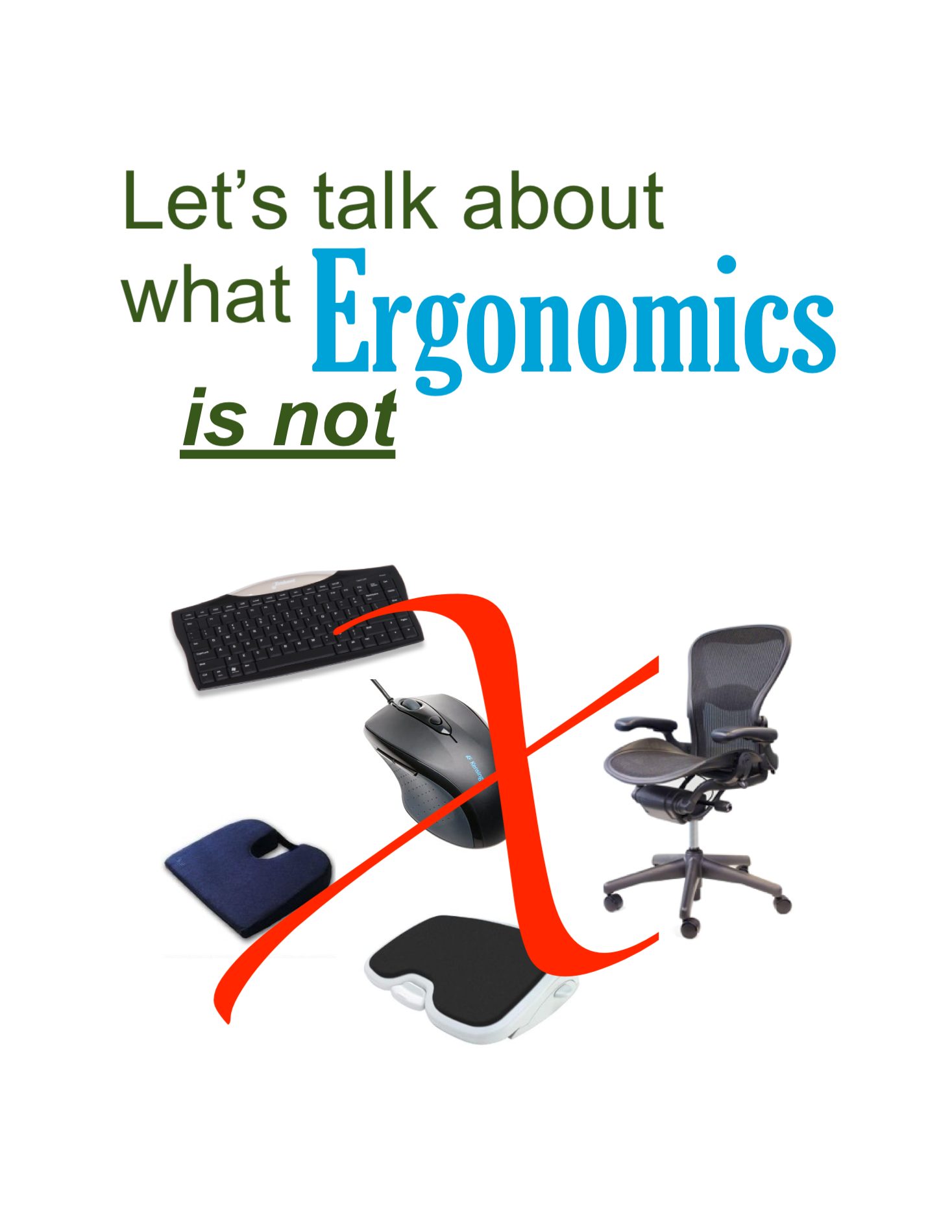Let’s talk about what ergonomics isn’t.
Why Your “Ergonomic” Chair Might Be Lying to You
Let’s clear something up: ergonomics is one of the most misunderstood and misused words in the modern workplace.
You’ve seen the labels—ergonomic mouse, ergonomic chair, ergonomic keyboard—as if simply slapping that word on a product magically makes it safe, comfortable, and supportive for everyone.
Spoiler alert: it doesn’t.
So, What Is Ergonomics?
As someone who’s worked in the field of human factors and ergonomics for over 20 years, let’s start with the real definition. According to the Human Factors and Ergonomics Society (HFES):
“Human factors and ergonomics is concerned with the application of what we know about people—their abilities, characteristics and limitations—to the design of products they use, environments in which they live and work, and jobs they perform. The goal is to reduce human error, increase productivity, and enhance safety, comfort, and enjoyment.”
My graduate textbook, Introduction to Ergonomics by R.S. Bridger, puts it like this:
“Ergonomics is concerned with the design of systems in which people carry out work… ensuring that human needs for safe and efficient working are met in the design of worksystems.”
In simpler terms: I define ergonomics as “safe work.” It’s about designing jobs, tools, and environments that fit you—not forcing you to fit them.
Why “Ergonomic” Products Miss the Mark
Let’s take the so-called ergonomic mouse. You might think it’s designed to be good for everyone’s hand. But what you actually have is a mouse that just happens to fit your hand—if you’re lucky.
And here’s the issue: people come in all shapes and sizes. What works for one person might not work for another. So how can a mouse—or any single product—be “ergonomic” for everyone?
It can’t. And that’s the point.
Even Dictionary.com Gets It Wrong
Out of curiosity, I looked up the definition of ergonomics on dictionary.com. Here’s what it said:
“Designed to be comfortable, safe, and efficient to use, especially in or as a work environment.”
Example: “These headphones have an ergonomic design and soft ear cups.”
Akkk! Even the dictionary is promoting the misuse of the word. Who’s doing the research over there?
This isn’t just nitpicking. When we dilute the meaning of ergonomics, we overlook what it’s really about: protecting people from injury, improving performance, and supporting individual needs.
Ergonomics Fits the Person—Not the Product
Let’s say you buy an “ergonomic chair.” But after a week, your back still hurts. So what went wrong?
That chair might have features—adjustable height, lumbar support, tilt—but it wasn’t selected or adjusted for your body and your posture. Without the proper fit and setup, it’s just another chair with a marketing label.
This is where my job comes in. As an ergonomist, I assess how your body interacts with your workspace. I help fit you to the tools and environment you use—not the other way around.
The Bottom Line
Ergonomics is not a chair. It’s not a mouse. It’s not a product.
It’s a process—a personalized approach to making work safe, healthy, and efficient.
So the next time you see the word “ergonomic” on a box, ask yourself:
Does this actually support my body and how I work? Or is it just a one-size-fits-all solution disguised as something more?
Real ergonomics is about you—your size, your shape, your work.
Let’s stop falling for labels and start designing for humans.
Let me know if you’d like to include a call to action, like inviting readers to schedule a consultation or ergonomic assessment!


0 Comments